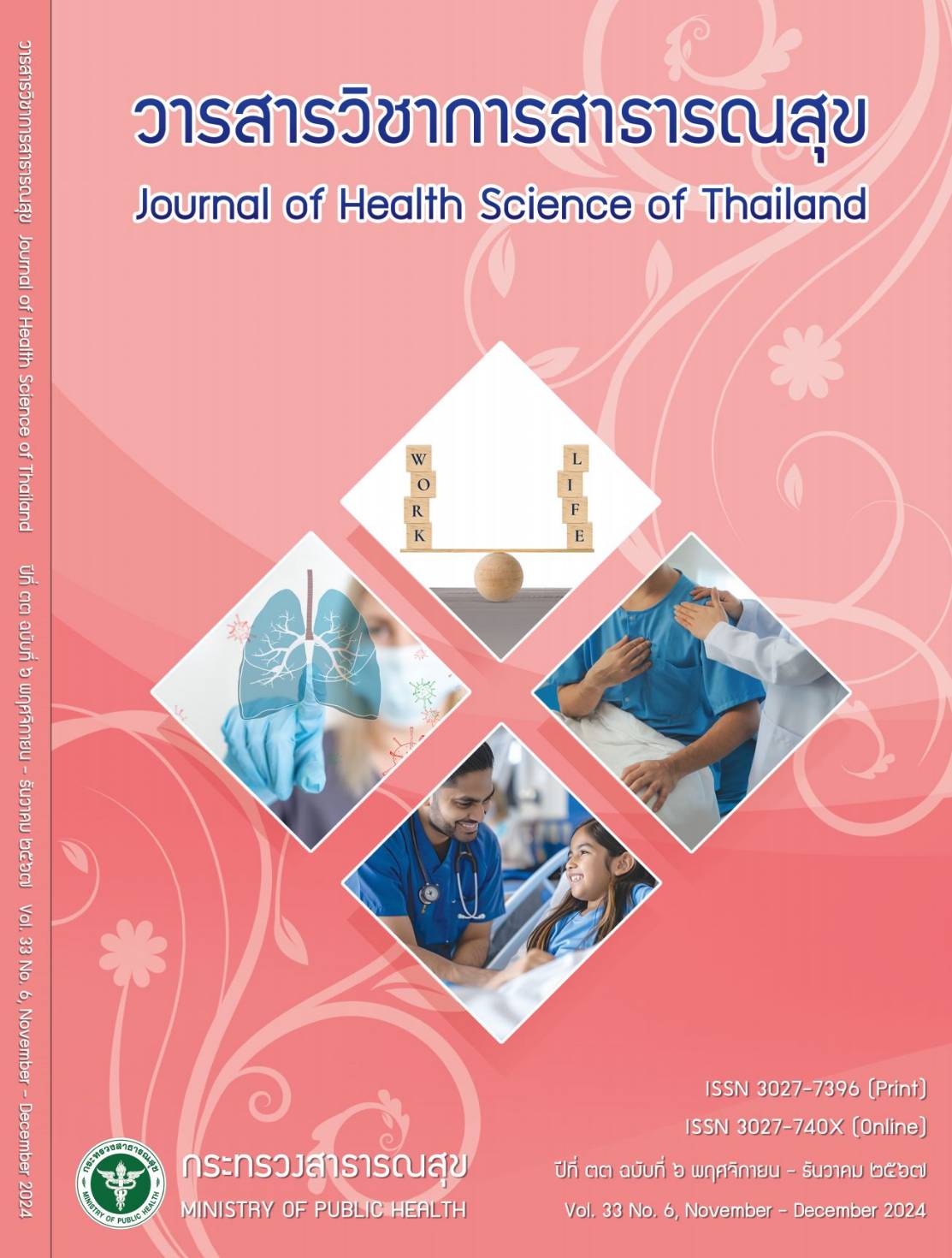Prevalence of Dysosmia and Dysgeusia in People with COVID-19 at a Tertiary Care Hospital
Keywords:
COVID-19, anosmia, dysosmia, dysgeusiaAbstract
The coronavirus disease 2019 is an infectious disease that affects the sensation of smell and taste.
This descriptive study aimed to assess the prevalence of dysosmia and dysgeusia in 400 people infected
with COVID-19 who came for screening at Ramathibodi Hospital, Bangkok. Data were collected from
medical records. Instruments for data collection included the demographic data form and health data
form, such as the history of infection risk factors, testing results for coronavirus 2019, symptoms
related to the sense of smell and taste, other abnormal symptoms, and medical conditions. The data were analyzed
using descriptive statistics, including frequency, percentage, mean, and standard deviation. The study
results found that a sample of 400 people had an average age of 41.54 years, with the majority being 221
females (55.25%). The most significant risk factor for COVID-19 infection was contact or close contact
with patients confirmed to have the disease in 316 cases (79.00%). The history of high blood pressure was
kbserved in 79 cases (19.75%). Dysosmia was observed in 99 cases or 247.5%; and the percentage of
cases with dysgeusia was 11.50% (46 cases). The number of cases with both symptoms was 35 (8.75%).
The study results demonstrated that dysosmia and dysgeusia are quite common symptoms in people
infected with COVID-19. Therefore, public health personnel can apply the study results as guidelines for
evaluating people at risk of developing COVID-19 and will continue monitoring their long-term
symptoms.
Downloads
Downloads
Published
How to Cite
Issue
Section
License

This work is licensed under a Creative Commons Attribution-NonCommercial-NoDerivatives 4.0 International License.







